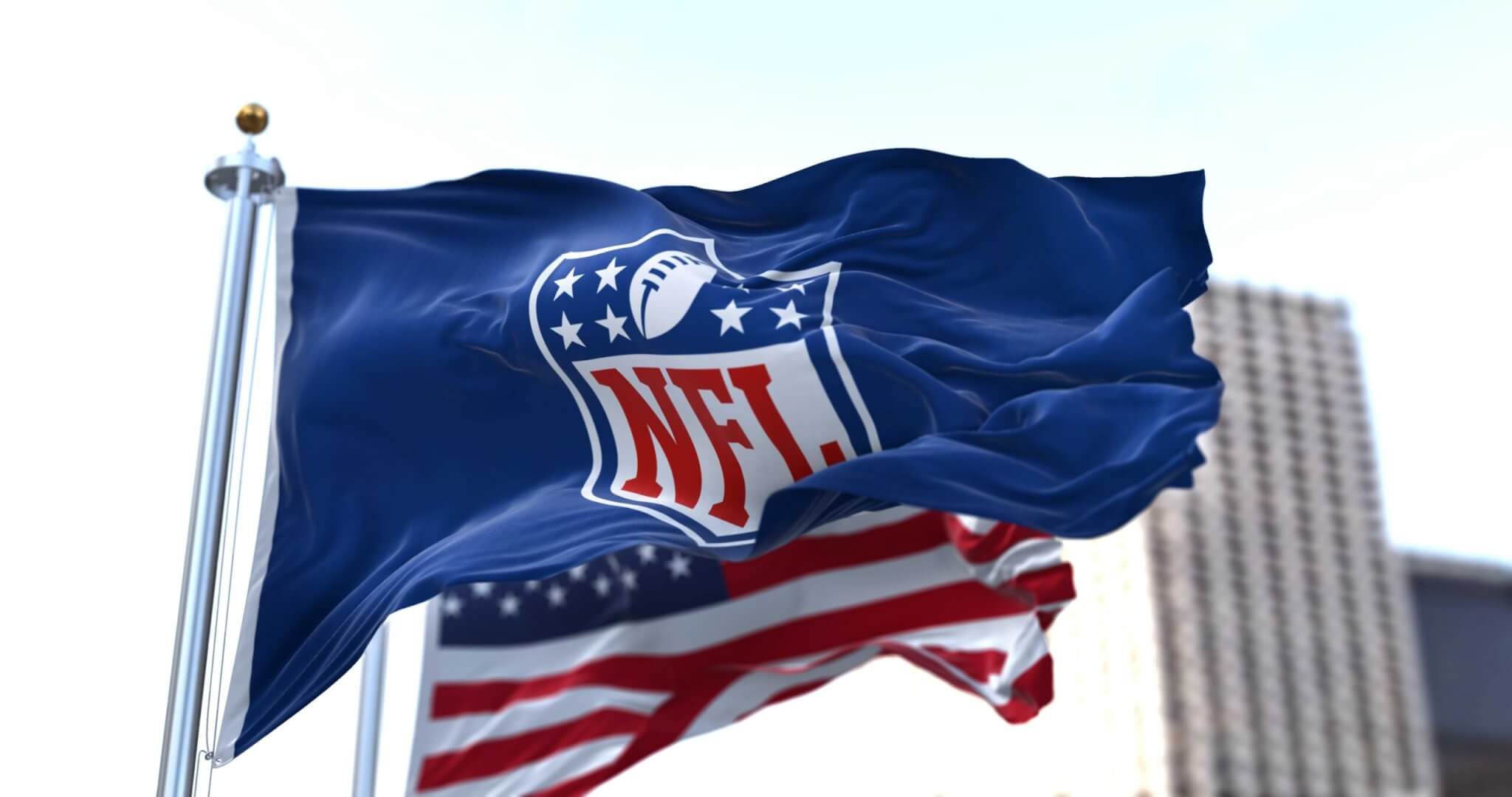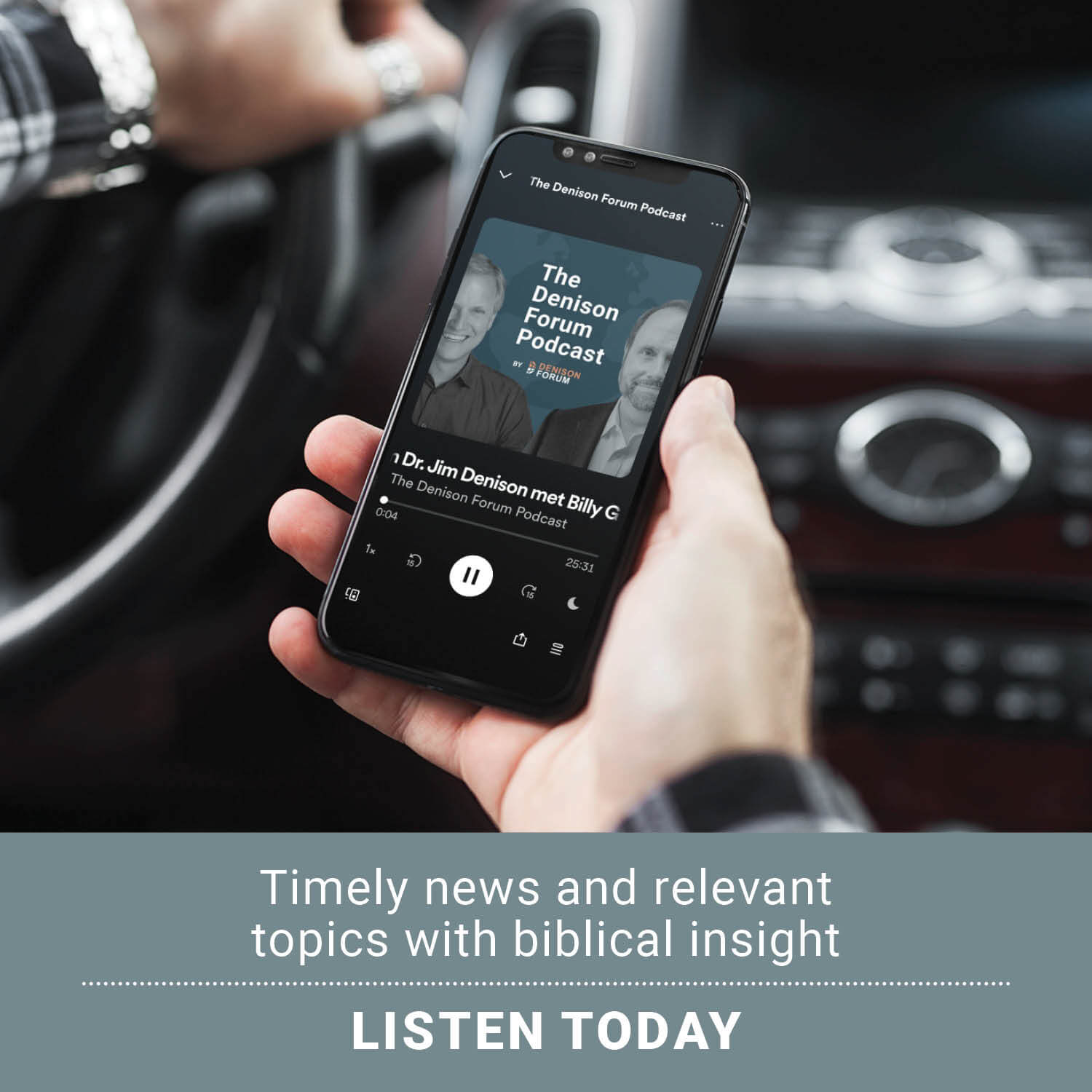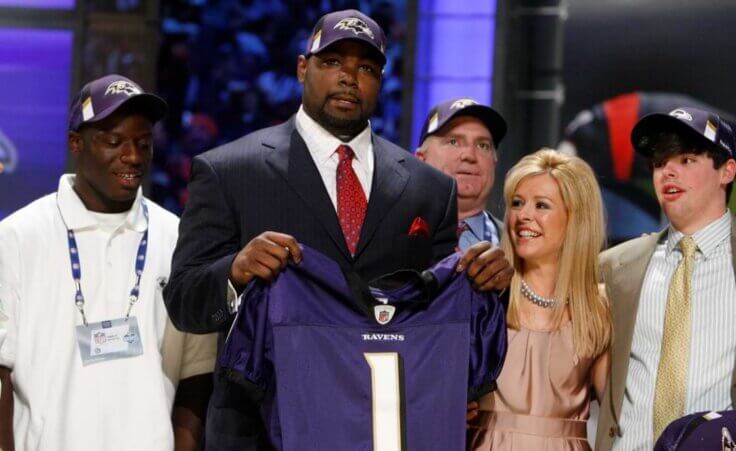
NFL flag waving in the wind. Photo by rarrarorro/stock.adobe.com
The 2024 NFL Draft starts tonight at 7:00 CST in Detroit, with the Chicago Bears widely expected to kick off the festivities by selecting USC Quarterback Caleb Williams first overall. After that, things could get interesting with little by way of consensus regarding who will be selected next.
That chaos is part of why the draft is my favorite part of the football season. That reality would probably change if the Cowboys ever made it to the Super Bowl but…yeah…I fear I’ll be sticking with the draft for the foreseeable future.
And when it comes to the draft, one of the most fascinating parts is that value seems to be such a nebulous concept for many of these front offices.
Why drafting is hard
To start, do you take the player you have ranked highest or the one who fills your biggest need? Ideally those two categories would coalesce into an easy choice, but that’s rarely the case. And how a front office chooses to navigate that conundrum can be the deciding factor on how long they get to keep their jobs.
To further complicate matters, who a player is in college may not be who they are in the NFL. The ability to project not only whose skills will translate but how they will translate to the, at times, vastly different systems that coaches run is another ability that gets some GMs fired and others into the hall of fame.
Take offensive lineman, for example. ESPN’s Adam Schefter recently tweeted a chart from their research department looking at which positions were considered the safest investment in the first round. Offensive lineman took the top three spots and were the only position that had a hit rate of 50 percent or greater.
In short, they’re among the safest positions to draft, but even then the process is not exactly straightforward. A team who runs a zone blocking scheme will be looking for an entirely different style of player than in a system that relies primarily on bullying the guy in front of you. With the former, you want players who are (relatively) light and agile while, in the latter, you need beef that can push some of the strongest humans on the planet in a direction they don’t want to go.
With some positions, like lineman, forecasting how well that transition will go is fairly straightforward. However, for others it can be a bit more difficult.
Fleeting hope for the future
As Schefter’s chart demonstrates, positions like wide receiver, tight end, and running back often leave teams chasing traits that never translate to production in the NFL. Perhaps the most precarious, though, is at quarterback where more than half of the picks leave teams looking for someone else after a few short years. That rate is roughly middle of the pack when compared to other positions but, when you take into account the way that teams often mortgage their future in an attempt to fill football’s most important position, missing often means the coaches and front office are looking for work alongside their failed QB. And when the coaches change, systems change and that can have a trickle down effect on the rest of the roster.
In this year’s draft, the expectation is that at least the first 3 picks will be quarterbacks, with possibly as many as 5 or 6 going in the first round. Rumors abound that teams like the Vikings and Broncos will consider mortgaging not only several picks this year but draft capitol in future seasons as well in an effort to find their franchise signal caller. And while some are better suited than others to make that work, most of these young QBs are headed to situations where they’re expected to lead and save a franchise so otherwise bereft of talent that the odds are heavy against them.
Still, regardless of whether or not those players eventually see success, the prospect of what they could one day become will fill fan bases with hope that today could be a turning point for their favorite team. And the reality that such hope, even when fleeting, can bring so much joy is a good reminder that all of us are wired to crave hope, even if it may seem hard to find at times.
Looking in the wrong place
In our world today, people search for hope in a variety of places. Currently, there are many people—though, thankfully, not as many as in the past—who’ve placed their hope in politicians. Others look to friends, family, or themselves for reasons to believe the future can be better than the present.
And while looking for hope in the wrong place can be disappointing, giving up on the prospect that there is reason to hope at all is debilitating.
The sort of nihilism that sees this existence as a meaningless slog toward death has become more common in recent years, particularly among young people. For example, more than 40 percent of adolescents report “persistent feelings of sadness or hopelessness,” and there is little reason to think those trends will turn around anytime soon.
And while it would be easy to lay the blame at the feet of a culture that has increasingly rejected God, is it really that simple?
Our calling as Christians
C.S. Lewis was correct when he stated that “God cannot give us happiness and peace apart from Himself, because it is not there. There is no such thing.”
Many of the problems our culture faces have been exacerbated by the temptation to look for happiness and hope in people and places other than the Lord. And while the problem is more complex than that, any solution will be better for starting with that basic understanding at its foundation.
Beyond our need for God, though, we must not forget that a key part of our job as Christians is to exude the joy of the Spirit to such a degree that it draws people to Christ. So before we start blaming the culture, the lost, or any of the other aspects of our society that make it hard for people to find hope, let’s start by looking at ourselves to see if we’ve given them any reason to give Jesus a second thought.
To that end, take a few moments to really ask God to show you where you turn for hope today. If someone was to watch the way you live, speak, and post to social media, would it inspire them to want to know God more or less?
How you answer those questions will go a long way toward determining the kind of impact you can have on those God has brought into your small slice of his world. So choose wisely, then trust him to use the joy and hope that only he can bring to draw others to himself.
That is his calling to all Christians.
How will you answer it today?






![File [LEFT] - Kansas City Chiefs tight end Travis Kelce celebrates after scoring during the second half of an NFL football game against the Chicago Bears Sunday, Sept. 24, 2023, in Kansas City, Mo. (AP Photo/Ed Zurga, File) [RIGHT] Taylor Swift, center, attended the Kansas City Chiefs NFL football game against the Chicago Bears with Travis Kelce's mother, Donna Kelce, at lower left, Sunday, Sept. 24, 2023 in Kansas City, Mo. (AP Photo/Reed Hoffmann)](https://www.denisonforum.org/wp-content/uploads/2023/10/Travis-Kelce-Taylor-Swift-1536-736x451.jpg)






